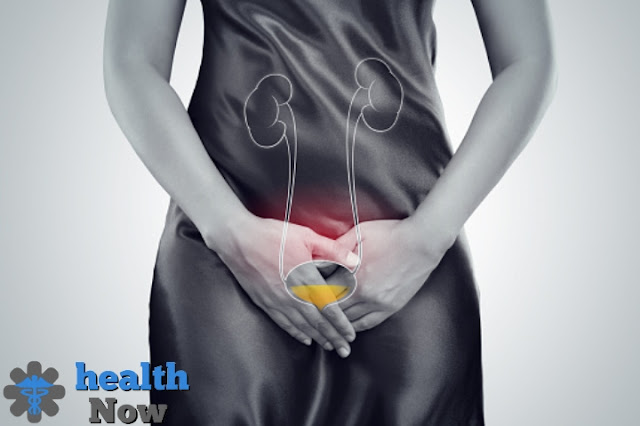Types of urinary tract infections.
 |
| urinary tract infections |
Ladies are bound to have a urinary tract infection more than men. Women will undoubtedly have urinary package pollution than men, Urinary lot disease is blessed to receive forestall entanglements, including the spread of contamination and its admittance to the kidneys.
acute pyelonephritis.
What is the distinction between intense and ongoing pyelonephritis? Intense pyelonephritis is one of the most well-known kinds of UTI. Intense pyelonephritis is partitioned into two kinds:
- Uncomplicated: Most cases of acute pyelonephritis are uncomplicated, and the main cause is often attributed to Gram-negative bacteria such as Escherichia coli, Proteus, Klebsiella, and Enterobacter, and the bacteria may reach the kidney either through the blood or through the lower urinary tract.
- Complex: It often includes pregnant women or patients with diabetes and kidney transplantation. It also affects patients with renal failure, whether acute or chronic and also affects immunodeficiency patients, who develop a hospital-acquired bacterial infection.
It is called chronic pyelonephritis when pyelonephritis occurs frequently or continuously, and it is a rare infection, and it usually affects children and people who suffer from urinary tract obstruction.
cystitis.
Why does cystitis occur more in women? It usually occurs as a result of an infection of the bladder, and the bacteria Escherichia coli is the most common cause of infection, however, cystitis is not a serious matter, but it causes inconvenience and discomfort to the patient.
it is preferable to start treatment so that the infection does not pass to the ureters and then to the kidneys, and the number of infected women exceeds Cystitis numbers of men, It may occur more frequently in women because the urethra is short and close to the vagina and anus where bacteria reside.
Urethritis.
What type of virus may cause urethritis? The urethra is the part that passes urine from the bladder to the outside. Urethritis most often occurs as a result of the following:
- Entry of bacteria from the area around the urethra, where gonococcus and Chlamydia trachomatis is the most common causes of urethritis, in addition to bacteria in the stool.
- Urethritis may occur as a result of infection with the herpes simplex virus, which is usually transmitted through sexual contact.
- Chlamydia trachomatis and gonococcal bacteria may cause pelvic inflammation in women, while in men they may cause epididymitis, which causes infertility.
Symptoms of urinary tract infection.
Symptoms of urinary tract infection may differ and are similar between children, women, and men, and none of them may occur, but when there are symptoms of UTI, this does not mean that the person has an infection, and the symptoms vary based on the part affected by the infection, and it is worth consulting the doctor because he is the specialist in determining the case, and the following Urinary tract infection symptoms in detail.
Symptoms of acute pyelonephritis.
Is pyelonephritis dangerous? Is the process of urination in the presence of this infection normal? Most cases of uncomplicated pyelonephritis are treated with oral antibiotics for 7 to 10 days. The most prominent symptoms of acute pyelonephritis are:
- Torment on one side in the lower back. Having a fever.
- feeling nauseous and vomiting.
- The presence of turbidity, blood, and foul odor in the urine.
- Intense desire to urinate.
- Pain during urination.
Acute pyelonephritis can rarely be severe, and the elderly and people with low immunity are most susceptible to infection.
Symptoms of cystitis.
Does the foul smell of urine indicate an infection? In most mild cases, they do not require treatment and disappear on their own within days, while people who suffer from frequent cystitis may need treatment, and the most prominent symptoms that indicate the presence of cystitis are as follows:
- Pain and burning during urination.
- Cravings to urinate and increased frequency of urination.
- The presence of turbidity, blood, and foul odor in the urine.
- Feeling pain in the lower abdomen.
Symptoms of urethritis.
Do symptoms appear only as a result of infection? Both men and women get urethritis, and like other urinary tract infections, the doctor may prescribe, depending on the severity of the symptoms, an appropriate antibiotic for the case. The most important symptoms of urethritis are the following:
- Feeling of pain in the abdomen and pelvic area.
- Presence of blood in the semen.
- The presence of blood in the pee.
- goosebumps.
- The appearance of urine is a dark color, turbid, and foul-smelling.
- Having a fever.
- frequent urination.
- The presence of itching in the genitals, feeling sick, and vomiting.
- A feeling of pain during intercourse in both men and women.
- Pain during urination.
- Discharge from the penis.
- Pus in the urine.
- Vaginal discharge.
In some cases, urethritis occurs as a result of reactive arthritis, which was previously known as Reiter's syndrome, in addition to urethritis, it may cause pain and swell in the joints and inflammation of the conjunctiva.
Symptoms of urinary tract infection in men.
Does UTI cause severe pain? According to the American Urological Association, 12% of men may develop symptoms of UTI, which means at least one infection during their lifetime, and the risk of infection in men increases with age, becoming more common after the age of 50.
“The longer the urethra in men, the more difficult it is for the bacteria to advance to the back undetected by the immune system, and then eliminate them,” says Landon W. Trost, a urologist in Rochester. The most common symptoms that may appear in men are as follows:
- frequent urination.
- A solid and steady inclination to pee.
- Release only small amounts of urine.
- Pee that is shady, horrendous, or noxious.
- Feeling of pain above the pubic or lower abdomen.
- The sensation of consuming or torment while peeing.
If lower back pain, fever, nausea, or chills are present in addition to the above symptoms, this may indicate a kidney infection, and prompt treatment is required.
UTI symptoms in women.
Does the use of female condoms cause urinary tract infections in women? Symptoms may appear either due to inflammation of the upper or lower urinary tract, and the most important symptoms of urinary tract infection in women are:
- Bad odor of urine.
- The sensation of agony and consumption during pee.
- Feeling the urge to urinate and an increased rate of urination.
- Inability to empty the bladder.
Female condoms and vaginal creams that kill sperm to change the pH of the vagina may cause UTIs in women, and so may cause UTIs in women.
Symptoms of urinary tract infection in pregnant women.
Is a urinalysis necessary for a pregnant woman? Is lower back pain an indication of this inflammation? Urinary tract infection during pregnancy is common, as it may occur as a result of the pressure of the fetus on the bladder, and the failure to empty it, and thus the survival of bacteria inside the bladder.
- The appearance of cloudiness or blood in the urine.
- Pain in the pelvis or lower back.
- Feeling the urge to urinate, and an increased rate of urination.
- Having a fever.
- Feeling sick or vomiting.
Usually, a pregnant woman is asked to perform a urine analysis during pregnancy. In the event of an infection, treatment is required, whether symptoms appear or not.
Symptoms of urinary tract infection in children.
Does burning during urination usually indicate a UTI in children? Usually, young girls are affected by 8%, while male children are 2%. It is worth noting that the risk of damage to the kidneys as a result of UTI in children is higher than in adults, and the most important symptoms that may appear in children are:
- Pain and burning during urination.
- Feeling the urge to urinate, even in the absence of urine.
- The presence of blood or foul smell in the urine.
- Having a fever.
- Torment in the lower back or around the bladder.
Usually, UTIs for children generally occur as a result of the entry of bacteria from the surrounding area, including the anus.
Diagnosis of urinary tract infection.
To diagnose UTI, the doctor reviews the patient’s medical and family history, as well as conducts a clinical examination, in addition to conducting some tests that will help diagnose the disease, as well as knowing the causes of UTI and the place to start treatment, which may include:
- Urinalysis: a laboratory test of urine is performed; To check for different cells and chemicals, such as red and white blood cells, germs, or too much protein.
- Intravenous pyelogram (IVP): This is a series of X-rays of the kidneys, ureters — the tubes that connect the kidneys to the bladder — and bladder, and uses a special dye into a vein. This test can be used to find tumors, structural abnormalities, and kidney stones or blockages. It checks the blood flow in the kidneys.
- Cystoscopy: In this test, a thin, flexible tube and viewing device are placed through the urethra; To examine the bladder and other parts of the urinary tract, this test can find structural changes or blockages, such as tumors or stones.
- Bladder ultrasound: Ultrasound uses high-frequency waves; This is to take pictures of the bladder and kidneys on a computer screen. The test is used to determine the size and shape of the bladder and kidneys, check for masses, stones, or kidney vesicles, as well as check for any blockages or other abnormalities.
When should you go to the doctor?
- If the individual doesn't answer treatment with anti-microbials.
- Urinary incontinence or an increase in the frequency of urination.
- Stomach pain, blood, or foul-smelling urine with one of the symptoms mentioned in the article.
- Erectile dysfunction in men.
As for children, go to the doctor in the event of a fever or pain below the navel or the presence of blood or an unpleasant odor in the urine.
How can UTIs be prevented?
Urinary tract diseases are very painful and annoying, and therefore they must be avoided, and among the most important instructions that will help prevent urinary tract infection, or reduce the possibility of infection, are as follows:
- Drink a lot of water and pee much of the time.
- Avoid certain beverages that irritate the bladder, such as alcohol and caffeine.
- Urinating shortly after intercourse.
- It is preferable to wipe from front to back when using the bathroom.
- Keep the genital area clean.
- Use of sanitary pads during menstruation.
- Avoid using female condoms or creams that kill sperm.
- Avoid using scented products in the genital area.
- Wear cotton clothing and a baggy dress to keep the region around the urethra dry.
- Usually, about 6-8 glasses of water are drunk; To maintain the integrity of the urinary system.


